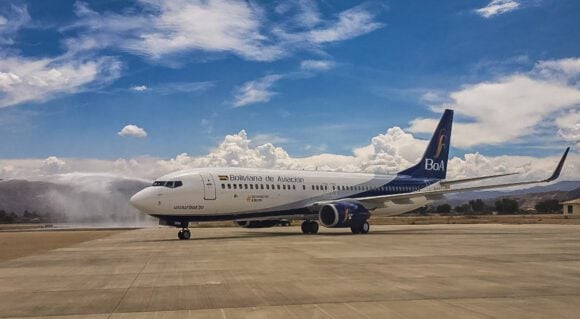
Comair MAX scaled
[UPDATE: This link is a worthwhile read to explain the chaos that is called South Africa]
Another airline bites the dust. Comair is 76 years old and weathered many crises before. Based on the linked story, a large part of the collapse of the airline is due to its MAX order. There are other issues as well, the combination of which created a hurdle investors would not support.
South Africa is a tough market for airlines. First, there is a state-owned entity that has been a failure for years but has been kept alive because of state ownership. Second, the state itself is a mess with infrastructure decay and state capture. That anyone can run a business in this environment is amazing. Moreover, the local air travel market is very competitive – Wikipedia lists JNB-CPT as the world’s 11th busiest city pair by flights. Certainly operating an airline in this environment is tough, and being successful is very tough.
The loss of Comair means a loss of about 40% of market capacity. That is very good news for the remaining airlines. Among these there are two that benefit right away – Airlink and Safair. These two operate nationwide and also across the Southern African region. Airlink has several codeshare agreements as well.
While flag carrier South African Airways is a shadow of its former self and offers no real competition, privately owned Airlink and Safair can capitalize on the loss of Comair. How they do this is going to be interesting. Airlink has an Embraer fleet, so its capacity is not able to grab as much of the capacity loss. Unless it rapidly acquires more E-190s and E-195s. This has been in the works for some time and now becomes a much more urgent issue. Safair is a 737 operator, like Comair, and is likely to be able to move faster to fill the capacity gap. Moreover, if Safair can acquire some of Comair’s fleet then it can close the capacity gap fast. One would think Comair’s lessors would grab at such an opportunity.
South Africa’s international air travel market has changed since the Covid crisis. Formerly the biggest inbound markets were European, specifically the UK and Germany. Now the big inbound traffic is the United States. As we have noted before South Africa has attracted attention from big US airlines. For American travelers, a relatively strong US Dollar goes far in South Africa. There are few other places that offer Americans so much value. It’s a long flight, but at the end of it the flora and fauna are among the world’s finest.
A key question now is how Airlink and Safair make their moves to fill the gap and keep traffic moving? Almost certainly airfares will go up. But that’s happening everywhere. As more European airlines start to serve Cape Town directly (KLM had daily service throughout the Covid crisis), as many serve Johannesburg now, the need to move travelers around the country should offer Airlink and Safair even more traffic. South Africa is roughly the size of Texas. Which means getting around requires flying.
The loss of Comair is tough for employees and investors. But, as is always the case, a loss offers somebody else an opportunity.
Views: 18




